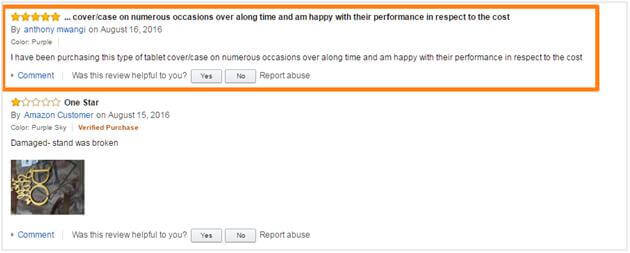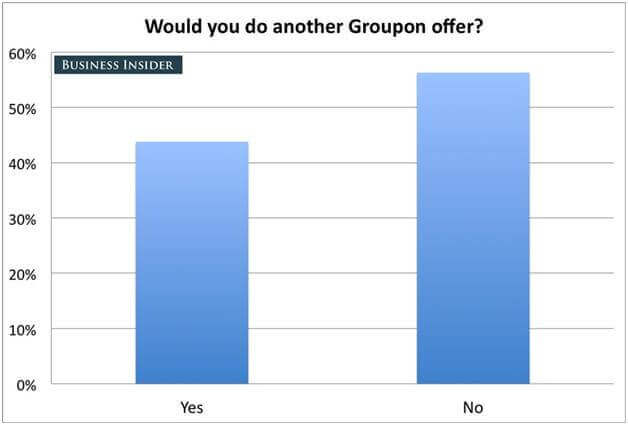3 popular CRO tactics (that can backfire terribly)
Ready to implement all those great conversion rate optimization (CRO) techniques you've learned? Not so fast! Columnist Khalid Saleh warns that if they're not done properly, your CRO efforts might run into trouble.

Conversion rate optimization (CRO) is an easy enough idea to understand. You perform tests, measure activity, and then choose a winner based on the results.
Unfortunately, many popular CRO tactics can actually hurt your business if not done correctly. In this post, I’m going to share three such tactics — and show you how they can backfire in your business.
1. Scarcity actually means scarce
Limiting the amount of a product or limiting the time to purchase is a classic conversion tactic — it compels people to buy something they might not have otherwise. In fact, scarcity is one of the core principles of persuasion. The scarcer something is, the more you want it.
Amazon’s “Lightning Deals” are a perfect example:

And here’s another example of Lily Pulitzer using a countdown timer to indicate when their summer sale prices end:

Scarcity works wonderfully, but only if you don’t get greedy with it.
Far too often, businesses create an artificial scarcity just to push up sales. True scarcity has a time limit. You can’t just restart a timer or restock a product (after it’s run out) and immediately begin the countdown again.
The more you do that, the less customers will trust your deals and offers. Groupon did this extensively and lost much of its customer base as a result. If customers realize that you’re just going to bring back the deal, they’ll hold off on pulling the trigger to make the purchase.
That’s not to say you can’t repeat a scarcity offer. You can.
Here’s how Starbucks does it to great effect:

By keeping their pumpkin spice latte limited only to fall, Starbucks get fans rushing to the nearest coffee shop for a cup. If Starbucks began offering pumpkin spice lattes in spring, summer and winter, there would be nothing special about it anymore. This would ultimately impact its demand.
Another great example of periodic scarcity is Black Friday sales. Customers know that every year, retailers will sell their wares at heavily discounted prices “while supplies last.” Should retailers extend the deals past Black Friday, their trustworthiness will likely suffer — as will their sales.
In fact, this report by TIME notes how extended Black Friday hours don’t actually increase sales but just distribute them over a longer period of time.
In other words, if you’re going to use scarcity, it must be real scarcity, not artificial.
2. Don’t buy fake social proof
“Social proof” is a concept based on our need to fit in and belong to a group; we tend to like things just because other people do (the bandwagon effect).
In marketing, social proof communicates that other people have purchased and found value in a product or service. The number of likes or followers your brand or product has on social media is one such way of providing social proof, as a high number indicates that your brand is popular and/or trustworthy.
And what’s a quick way to get more followers?
By buying them. It’s very easy to buy a following from online marketplaces. Just do a quick search for “followers” on Fiverr, and you’ll find this:

Five dollars to increase your follower count. Sounds great, right?
Just a small problem. These followers will likely be bot accounts that won’t do anything after liking your page.
Your Facebook page may end up looking like this:

Engagement on the content you post will be next to nothing.
Engagement matters not just for driving more traffic to your site, but also for persuading customers and building up your brand image. When a genuine visitor does land on your page and sees no retweets, shares or comments, they will probably assume your page is a spam account, hurting your brand image.
Even worse is buying fake reviews or testimonials. Not only is this illegal, but customers can usually spot such fake reviews and testimonials a mile away. There are some telltale signs, such as short, vague reviews and entirely positive sentiment.

This can hurt your brand in the long run, even if it gets you better ratings in the short run.
The lesson: If you’re going to use social proof, make sure that it is legitimate.
3. Giving away discounts can hurt your business in the long run
The quickest way to increase your sales is to slash your prices.
Though discounts might provide you an initial increase in conversions, what happens when you end your discount? Will those people come back and buy from you?
Probably not. Discounts don’t provide you with you with long-term customers. Instead, you get “discount hunters” who are just looking to save a buck
Furthermore, you may also drive away existing customers if they perceive that you emphasize price over quality.
This is one reason why Groupon has a very low repeat rate for customers as well as merchants — most people don’t come back after hunting for discounts.

So, how do you give a discount without actually giving a discount?
One great way is to offer free shipping. Here’s how Macy’s does it:

Instead of offering a discount on clothes, which might reduce their perceived value, Macy’s offers free shipping. Since shipping costs are also the biggest reason for shopping cart abandonment, “free shipping” addresses this customer concern as well.
Customers who actually love your products will still buy at a normal price regardless of discounts, but tactics such as free shipping will help convert customers who were on the fence earlier.
Conclusion
Many popular CRO tactics might work well in theory, but they can backfire terribly when executed incorrectly.
Always consider the potential impact of any conversion tactics you plan to use. You don’t want to sacrifice the long-term viability of your business just for momentary gains in conversion rates.
Contributing authors are invited to create content for MarTech and are chosen for their expertise and contribution to the search community. Our contributors work under the oversight of the editorial staff and contributions are checked for quality and relevance to our readers. MarTech is owned by Semrush. Contributor was not asked to make any direct or indirect mentions of Semrush. The opinions they express are their own.
Related stories